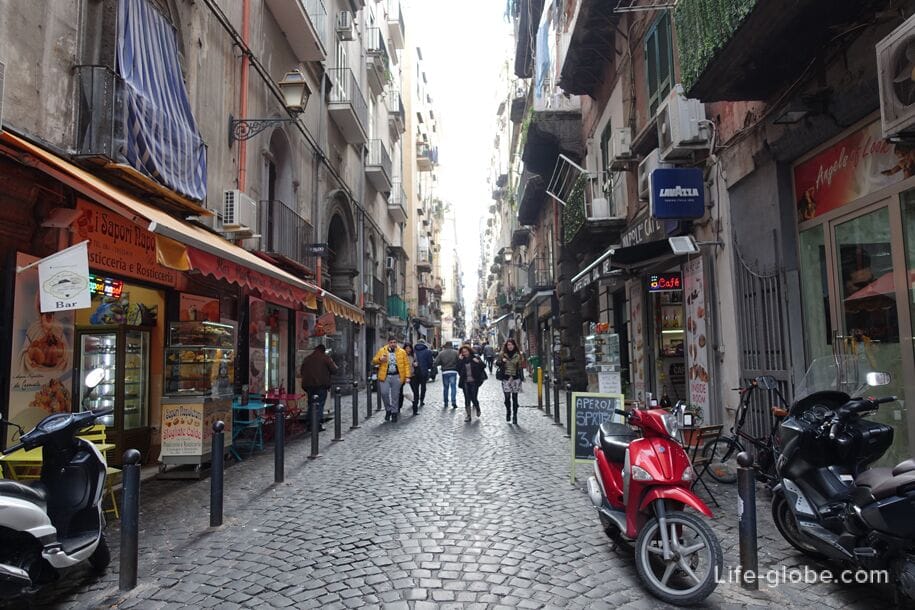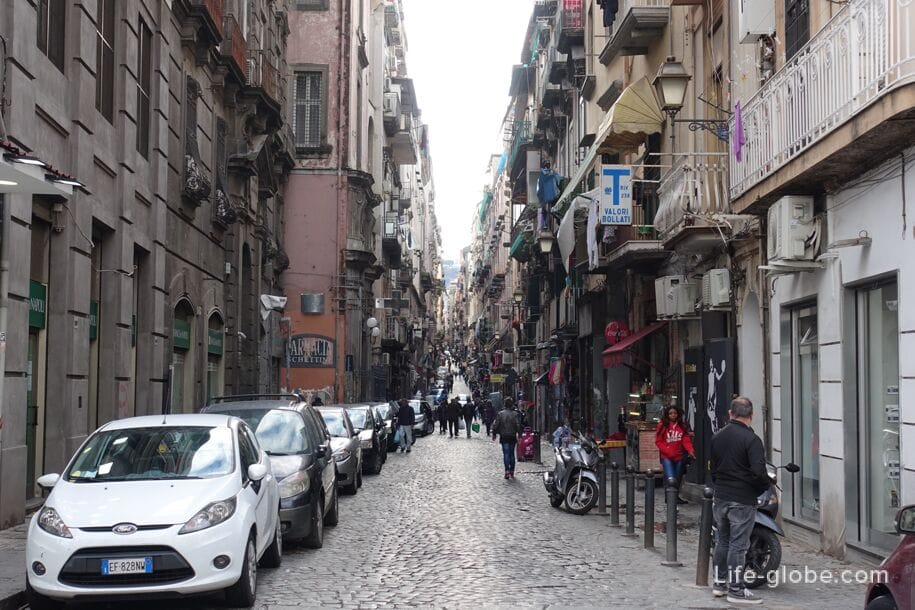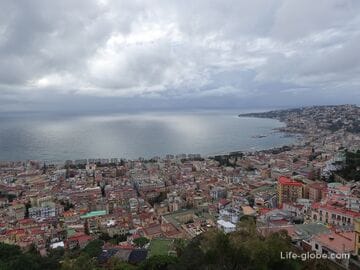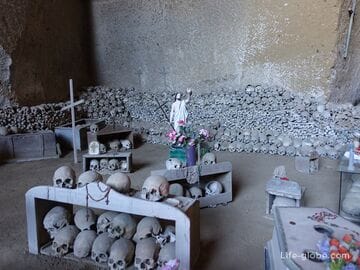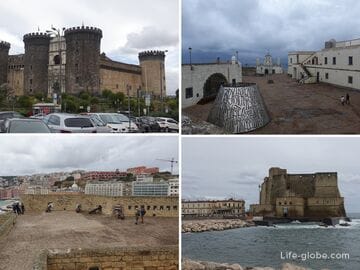Spaccanapoli, a narrow street crossing the historical centre of Naples from the southwest to the northeast.
Its origin the street takes from the Greco-Roman era, and due to the fact that the morning long and the top it seems that it divides the historic center of modern Naples in two parts, the street name literally means "Naples splitter".
This street you won't find on the maps, officially it consists of several independent streets, smoothly flowing into one another.
Originally, the route began with the Piazza San Domenico Maggiore and continued until the Duomo. In Roman times, the path widened and covered the territory of present square of gesù Nuovo, as evidenced by the remains of Roman baths found under the monastery of Santa Chiara. During the Renaissance and later, the path was also changed, many of the Gothic buildings were reconstructed, restored, as well as new buildings were being erected.
At present, the length of Spaccanapoli, the leaves about 2 kilometers, it is composed of: Pasquale Scura street, Maddaloni Domenico Capitelli, Piazza Gesu Nuovo, street Benedetto Croce, Piazza Nilo and San Biagio Dei Librai and then crosses Spaccanapoli street Duomo (named for the Naples Cathedral) and go outside the old city centre.
The morning today is the invisible vein of the city; - the place where the main tourist routes in Naples; - the abundance of cafes, small restaurants and taverns serving the famed pasta and Neapolitan pizza, small boutiques and souvenir shops.
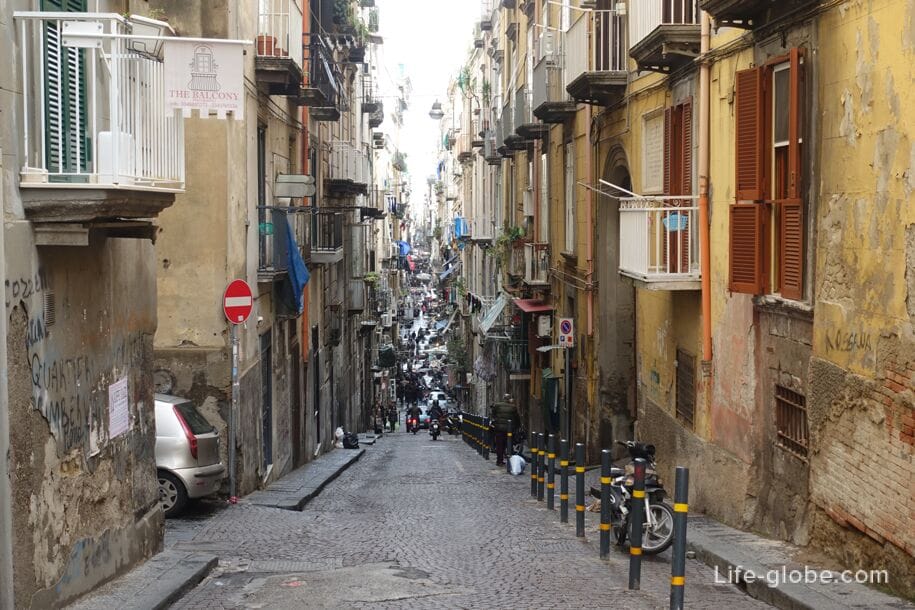

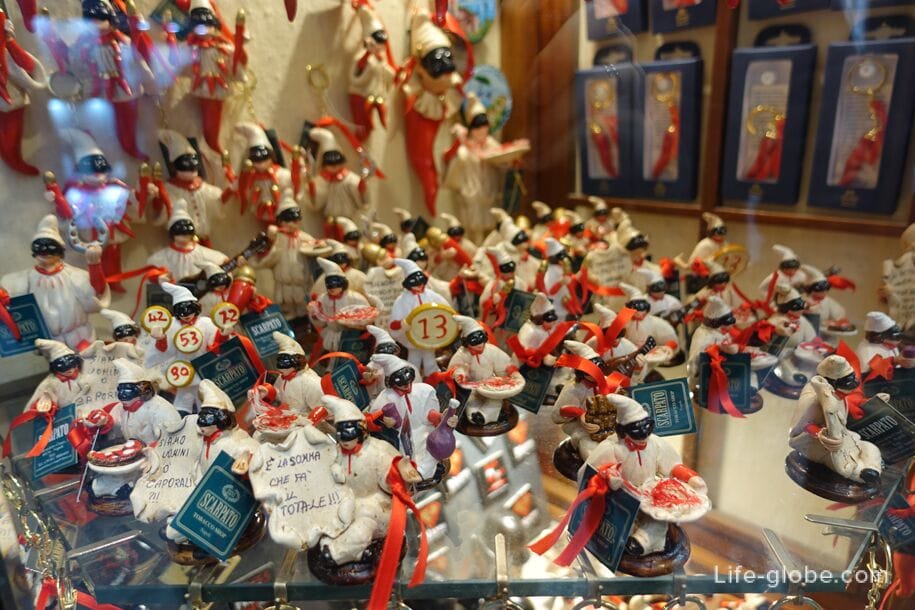
In the South-Western tip of Spaccanapoli street is the Roman Catholic Church of the 18th century Santa Maria de Sette Dolori (S. Maria ad Ogni Bene dei Sette Dolori).
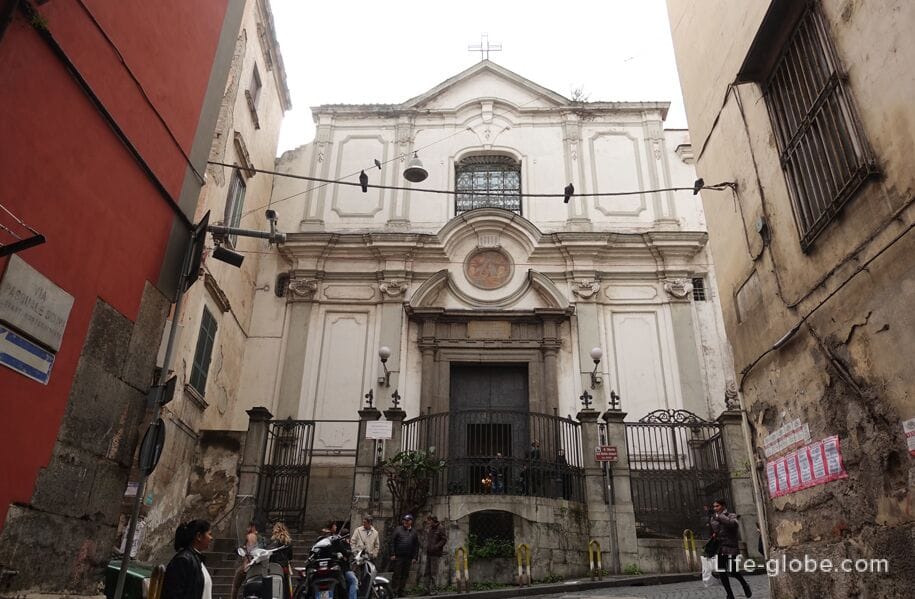
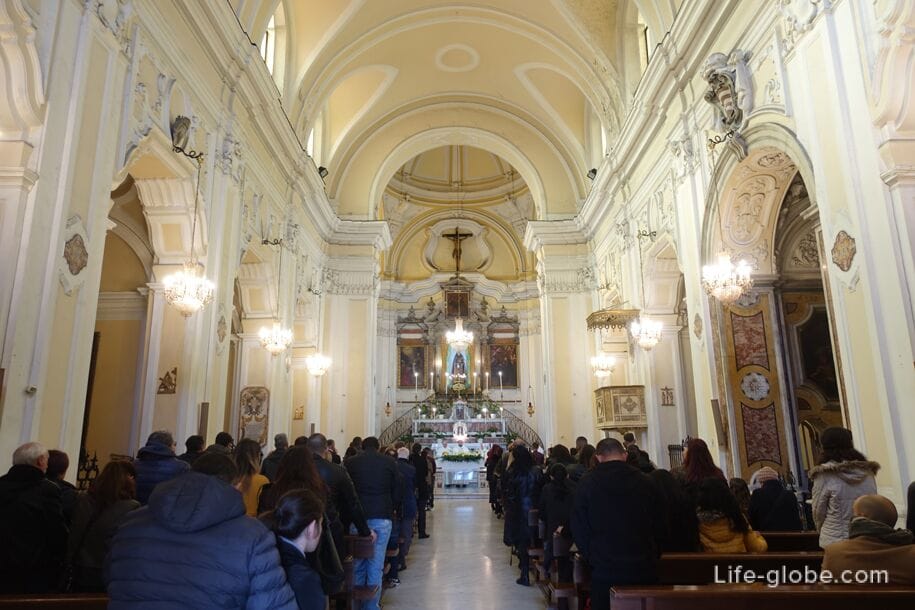
Because the Church stands on the rise of the Vomero hill, then this place offers a beautiful view to the street Spaccanapoli.
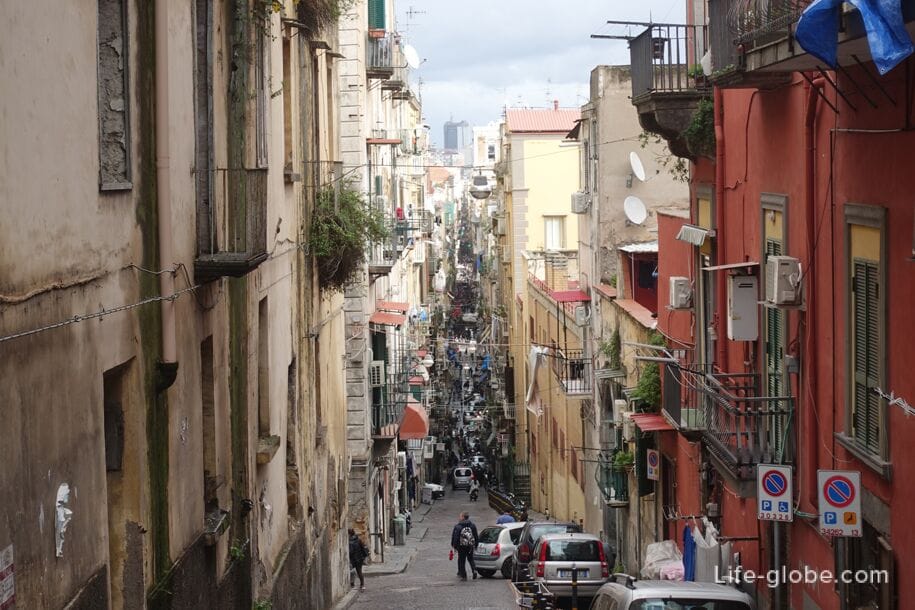
Also from the Church, for panoramic Pedamentina ladder, you can climb to the castle of Sant'Elmo.
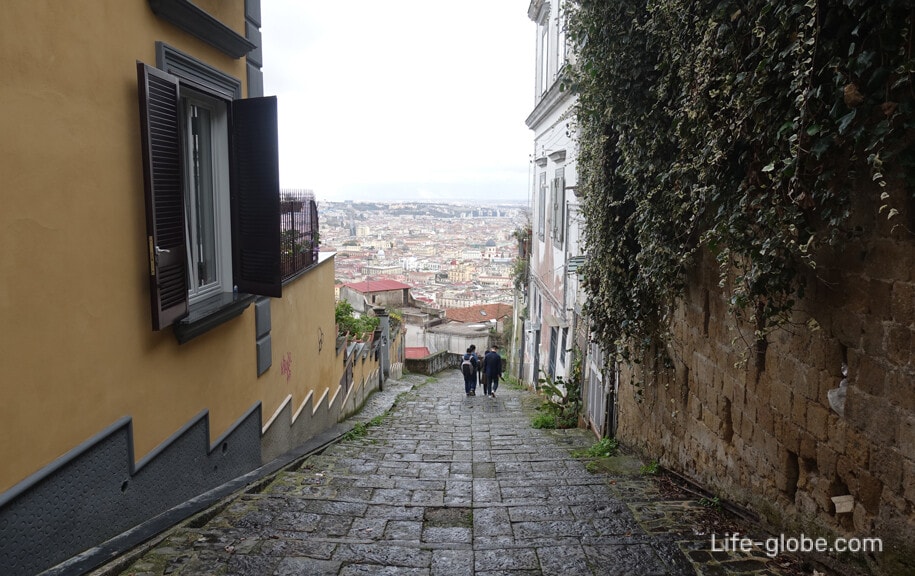
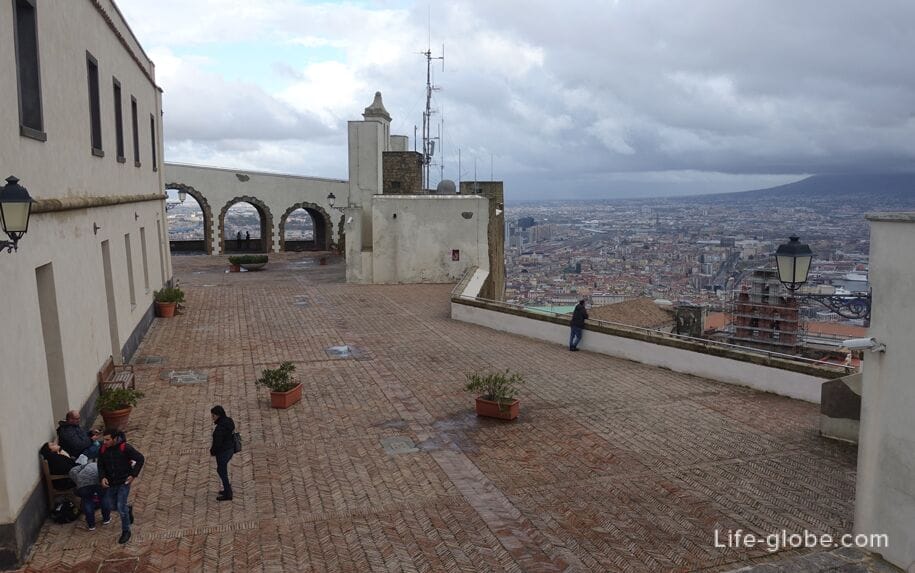
One of the main landmarks of Spaccanapoli, is the square of gesù Nuovo (Piazza del Gesu Nuovo), translated from Italian meaning the area of the New Jesus.
Around the perimeter of the square is decorated by monumental historic buildings, and in the center stands a 30-meter marble obelisk is one of the best examples of Baroque sculpture in Naples.
Also on the square is notable: the eponymous Juzu Nuovo Church in the Baroque style, with an abundance of frescoes in the interior and religious monumental complex of Santa Chiara, which go: Basilica, a courtyard, Museum and the archaeological site of the monastery. Read more about the square of gesù Nuovo...

Street Spaccanapoli

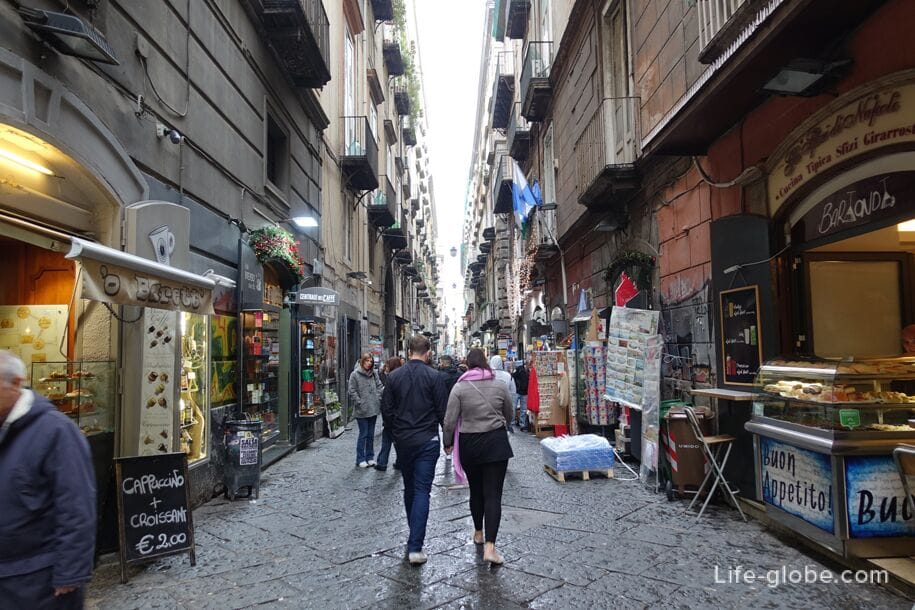
Palazzo Venezia or the Venice Palace (Palazzo Venezia) is one of the most important and unique buildings in the centre of Naples.
Currently the rooms of the Palace used for exhibitions and events. Part of the building can be visited free of charge. Also in the Palace are the courtyard and garden, a souvenir shop and cafe tables which are placed on the wide balcony. Read more about the Palazzo Venezia...
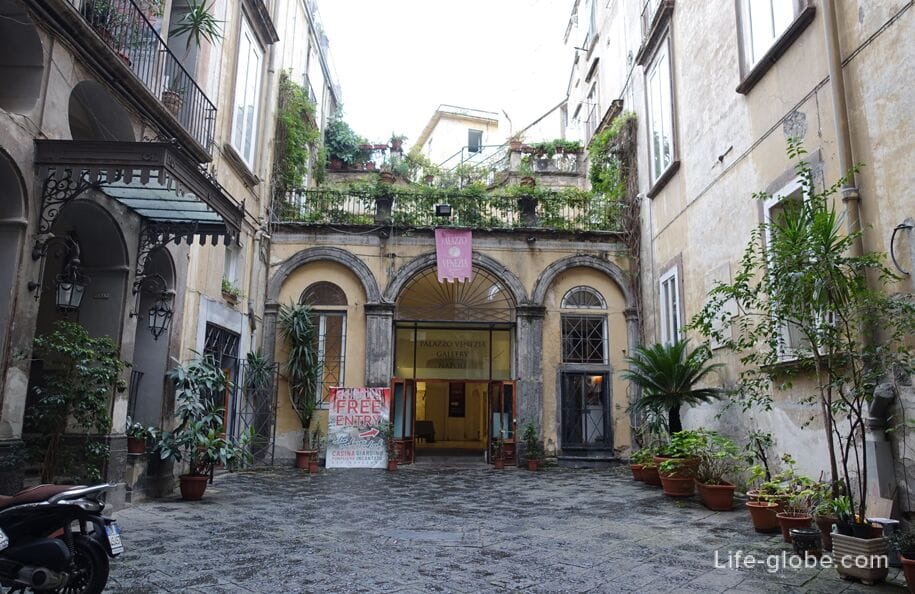
Street Spaccanapoli

Another remarkable area of Spaccanapoli, San Domenico Maggiore (Piazza S. Domenico Maggiore).
The main dominants of the square are: the namesake Church of San Domenico Maggiore (San Domenico Maggiore) and the obelisk rising in the centre of the square in memory of the plague epidemic. Nearby Sansevero chapel.
The Church of San Domenico Maggiore is part of the former Dominican monastery complex and one of the main churches in Naples. The apse of the Church faces the square.
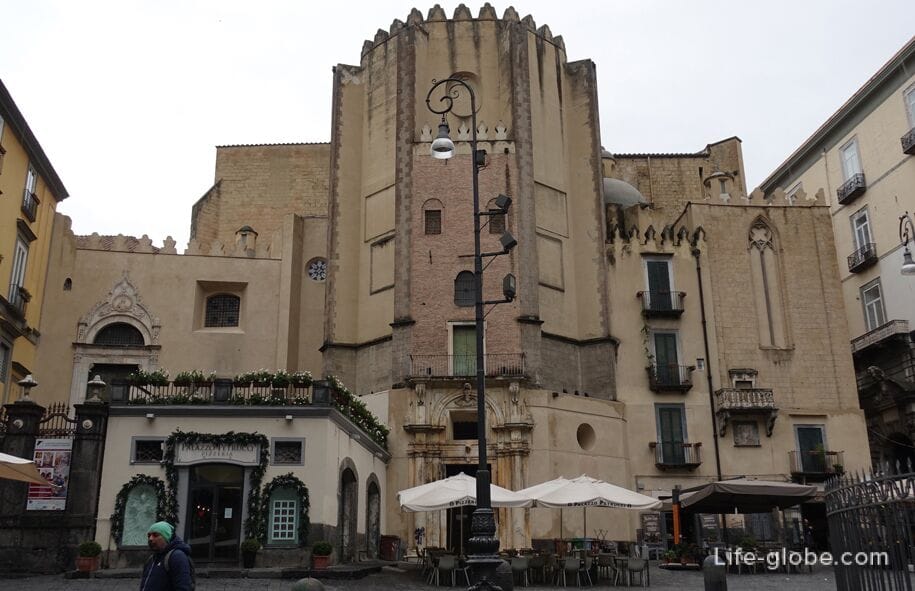
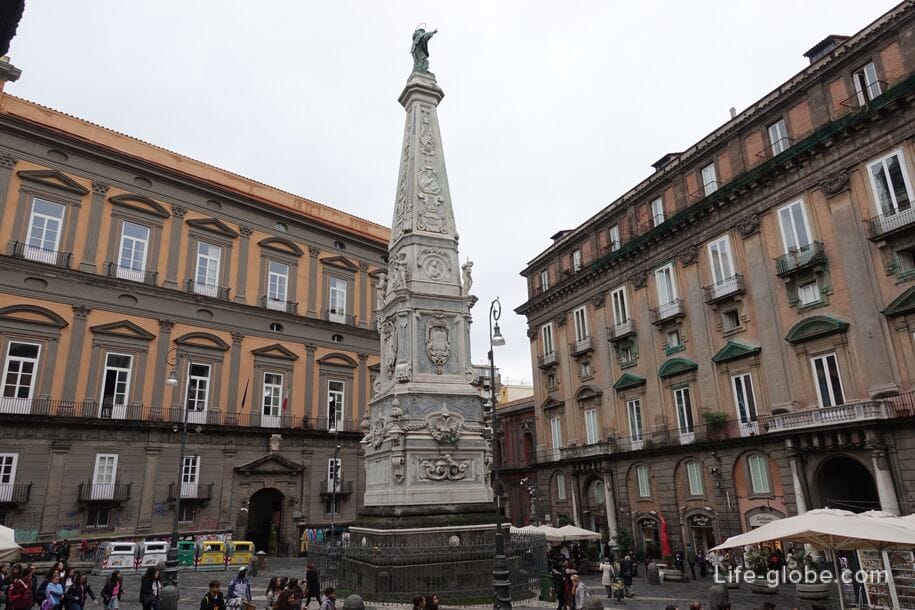
Besides the Church of San Domenico Maggiore and its obelisk, the area is surrounded by other historical buildings such as:
Palazzo Petrucci Palace of the 15th century;
- the Palazzo Saluzzo di Corigliano, built in the early 16th century and restored after the earthquake of 1688. Today the Palace is the seat of the University of Naples L Orientale;
Palace of the Sangro di Casacalenda, the construction of which was begun in 1766 and completed Luigi Vanvitelli. In the Palazzo there is a gallery of frescoes, Fedele Fisette and courtyard with Doric columns.
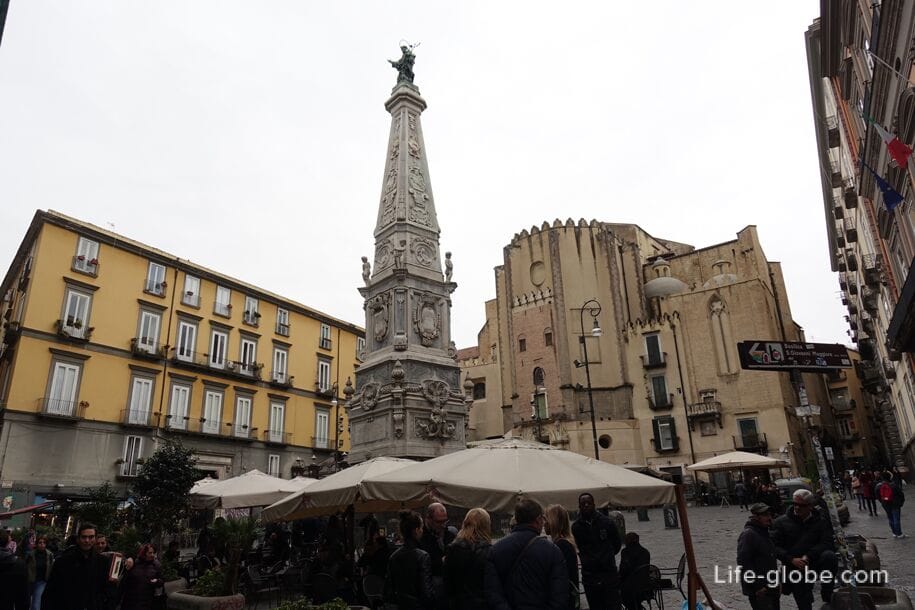
The area of Nilo (Piazzetta Nilo / Piazzetta Nilo), which got its name from a statue of the God of the Nile, is present adjacent to the area of the territory.
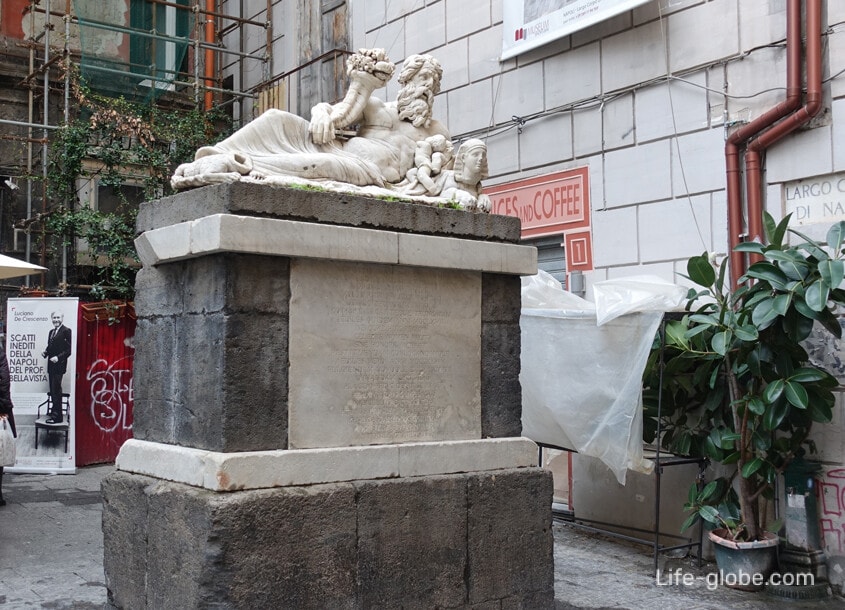
Dominating the square Nilo stands the Church of Sant Angelo Nilo (Chiesa Sant'angelo a Nilo or Brancaccio Chapel). Inside the Church are tombs of the members of the Brancaccio family, including one of the most prestigious works of the city - the monumental tomb of cardinal Rainaldo Brancaccio, created by Donatello and Michelozzo.
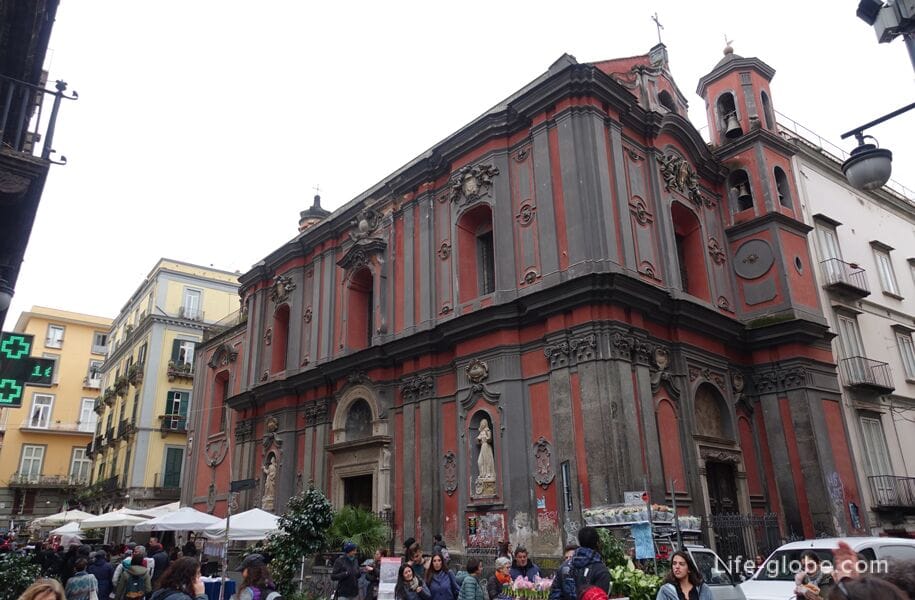
The square of the God Nilo: cafe, shops and souvenir shops.
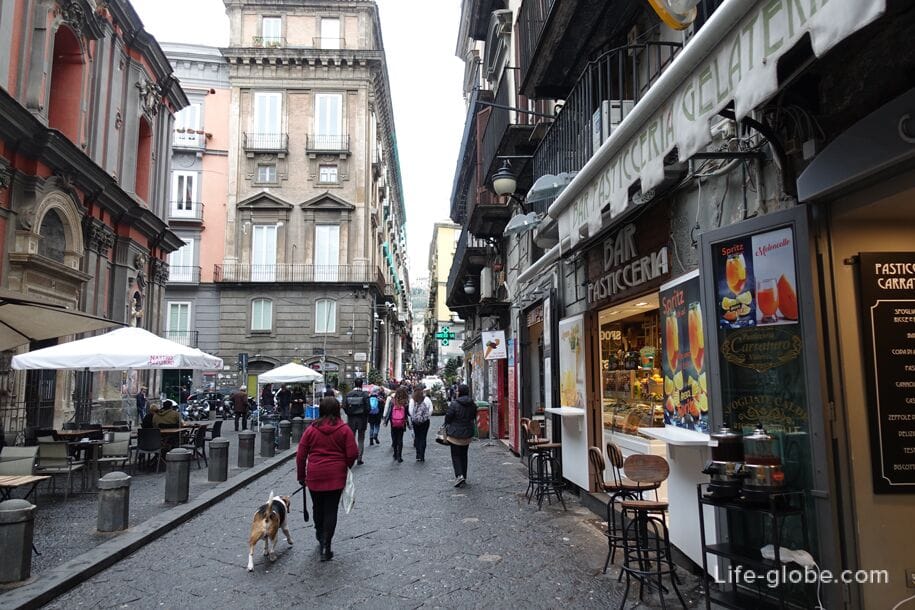

Street Spaccanapoli

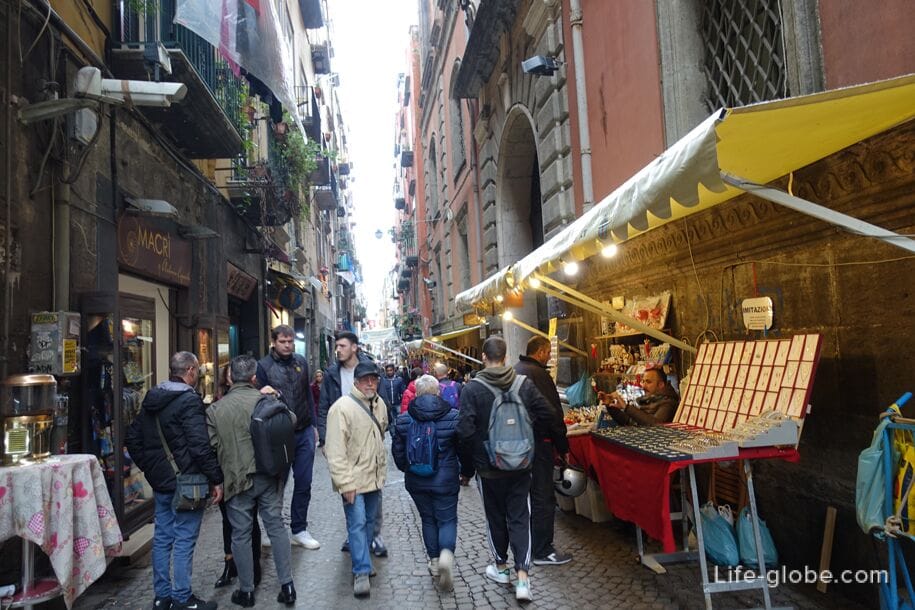

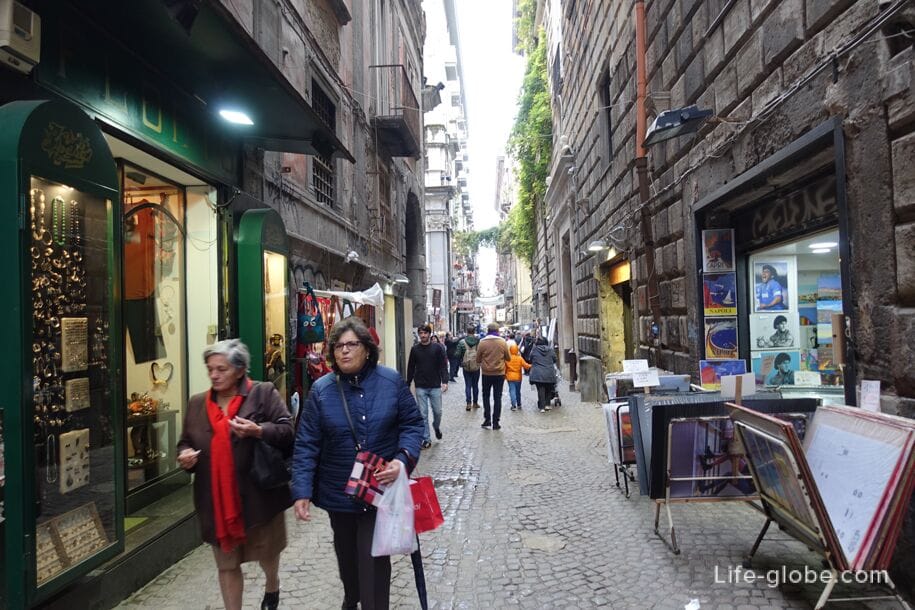
From Spaccanapoli diverge in different directions, other, not less important, the streets of the "old Naples", together forming the historic centre of the city.

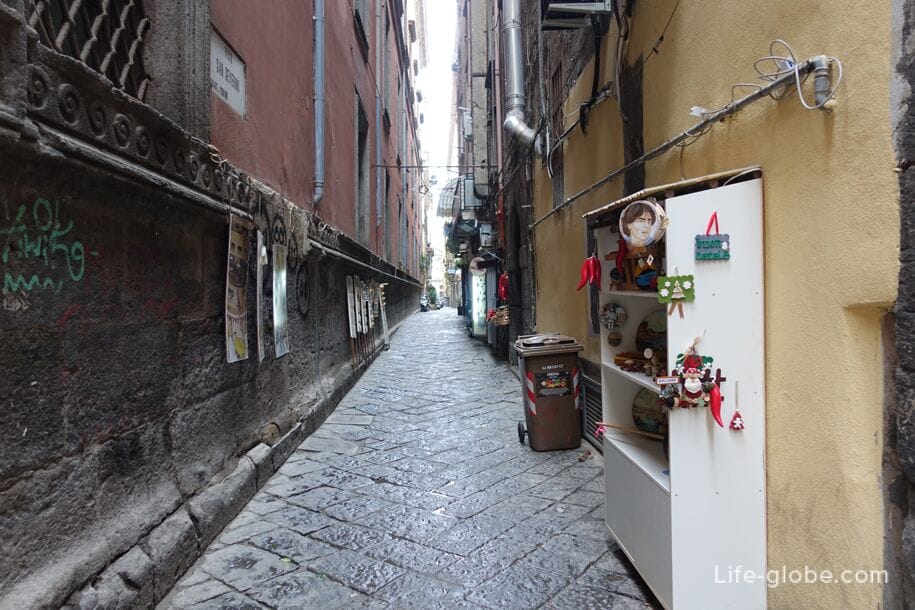
It is an interesting street of San Gregorio Armeno (S. Gregorio Armeno), where the homonymous Church and monastery, the abundance of boutiques and souvenir shops, and before Christmas here sell items to create your own songs of Christmas.
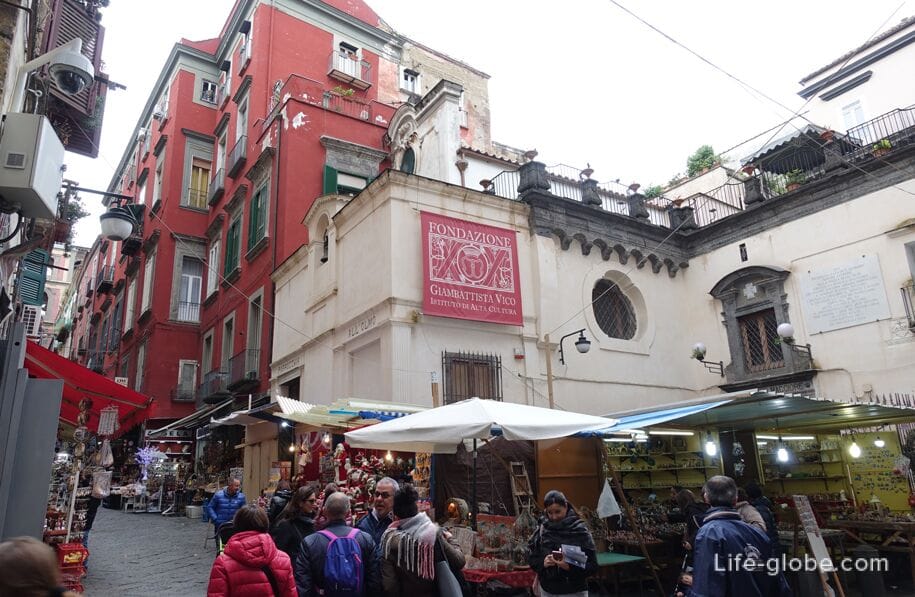
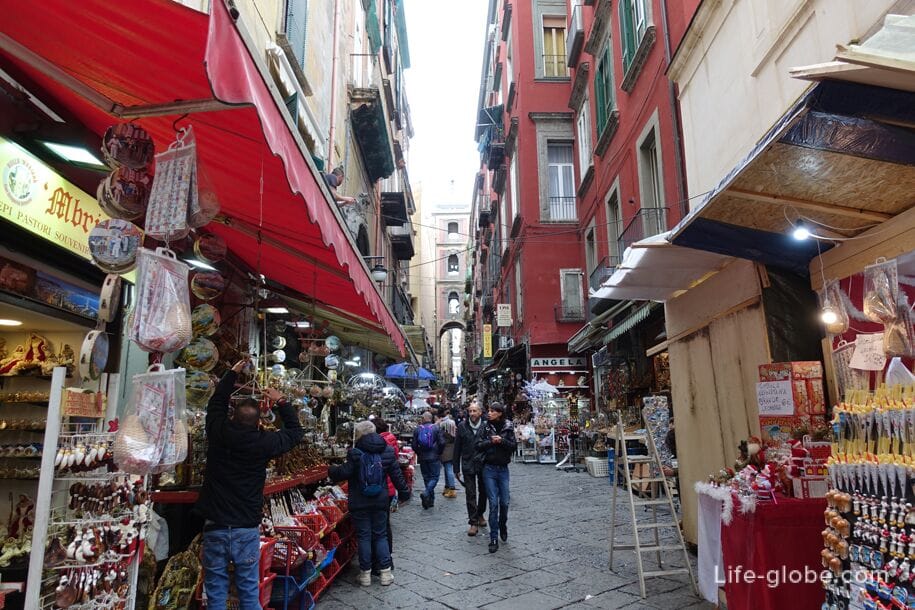

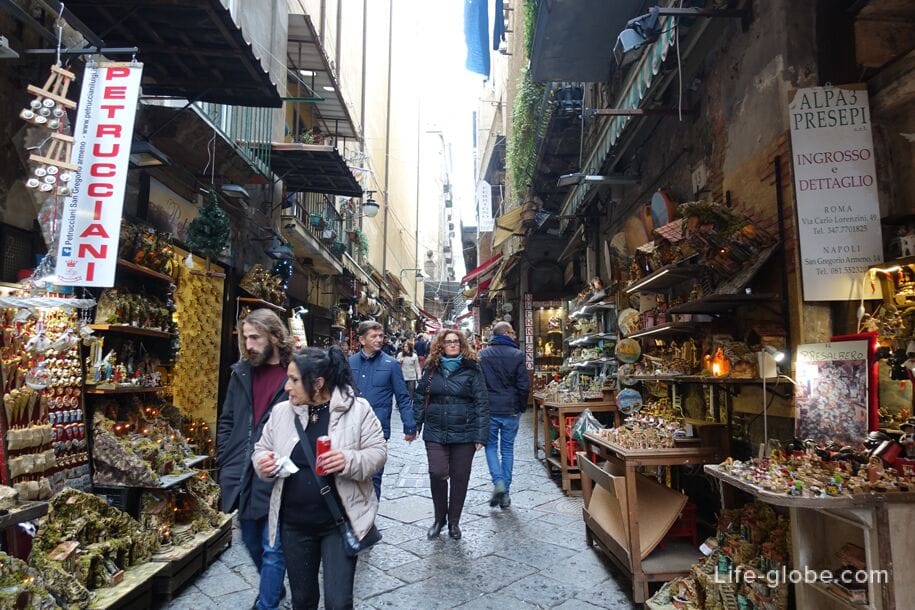
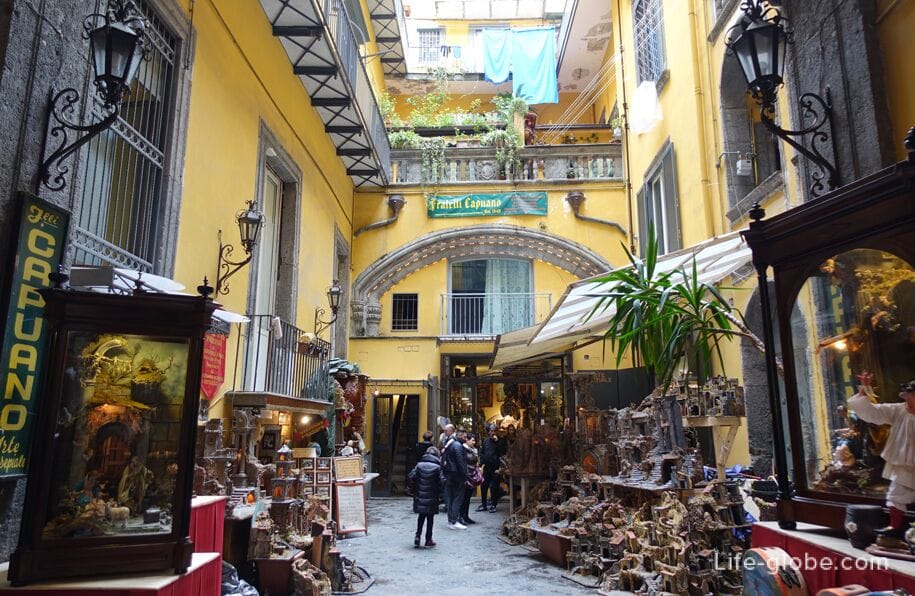
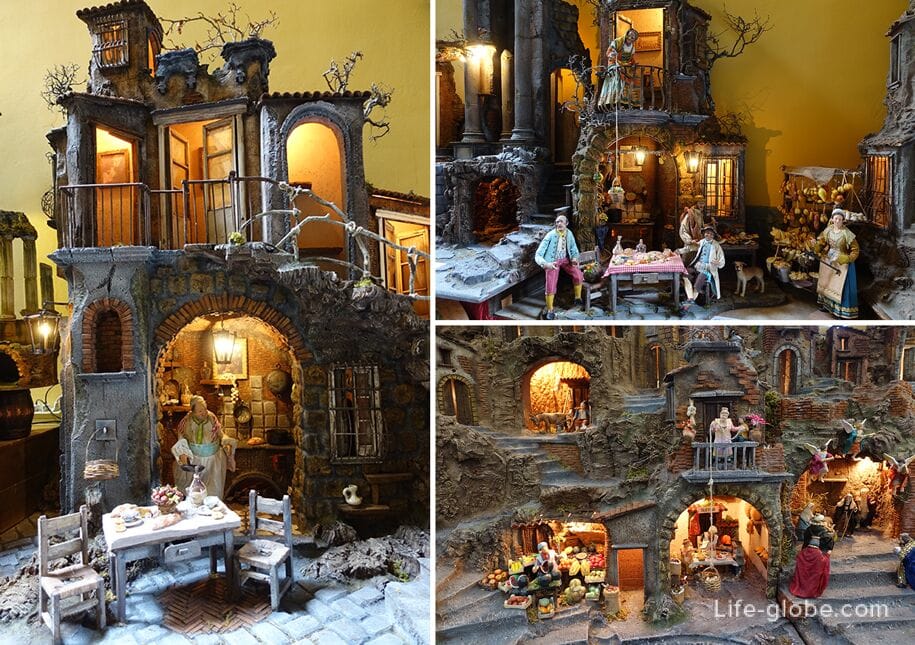
Street Spaccanapoli
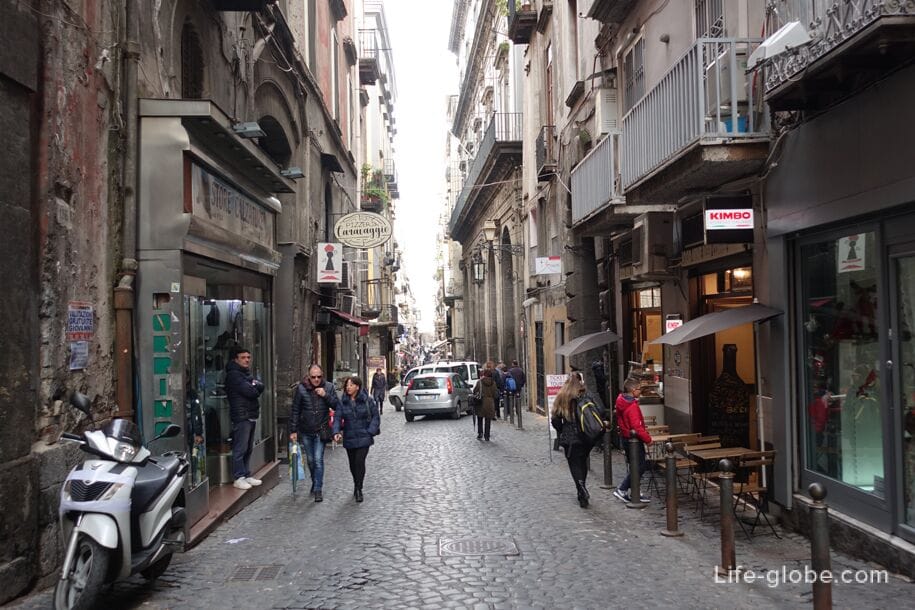

Street Duomo (Via Duomo), crosses the street Spaccanapoli, there are Catholic churches in Rochelle Mannese (Chiesa delle Crocelle ai Mannesi) in 1882 and the Church of San Giorgio Maggiore (Chiesa di San Giorgio Maggiore), originally built between the late fourth and early fifth centuries as the early Christian Basilica.
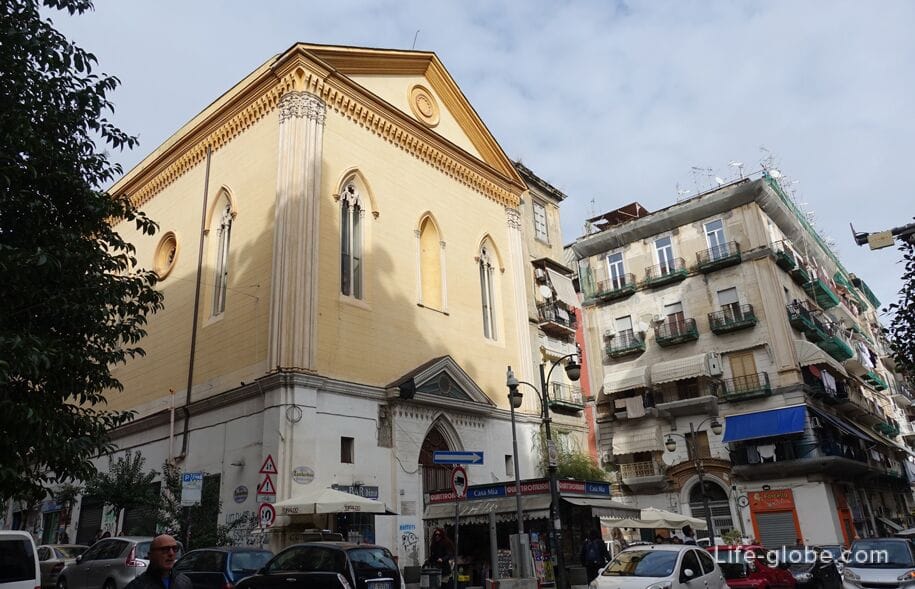

If you climb the street, the Duomo, the via 280 meters, we find ourselves near the Cathedral of Naples is the Naples Cathedral, the modern official name is the Cathedral of the assumption of St. Mary (Cattedrale di Santa Maria Assunta). Read more about the Cathedral of Naples...

The North-Eastern extremity of the street Spaccanapoli
